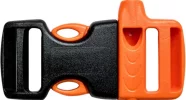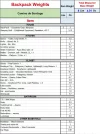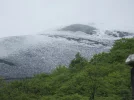Hi Everybody,
I want to open up a nice little forum regarding 'What you pack' for your Camino walk in the Months of April & May which is Spring time...
We have done a lot of reading and research probably like everybody else that has been on the walk and even planning...
We are almost certain to what we will bring now as we have dwindled it down so we have the necessities and not the weight!!
But we are curious what other people that have already done the walk packed and what they think they could of left or brought extra...
just to add... to make the thread a little more interesting... what is the weirdest/strangest thing you have packed too...
Cant wait to hear your replies.
Thanks to everyone that contributes.
I want to open up a nice little forum regarding 'What you pack' for your Camino walk in the Months of April & May which is Spring time...
We have done a lot of reading and research probably like everybody else that has been on the walk and even planning...
We are almost certain to what we will bring now as we have dwindled it down so we have the necessities and not the weight!!
But we are curious what other people that have already done the walk packed and what they think they could of left or brought extra...
just to add... to make the thread a little more interesting... what is the weirdest/strangest thing you have packed too...
Cant wait to hear your replies.
Thanks to everyone that contributes.
























